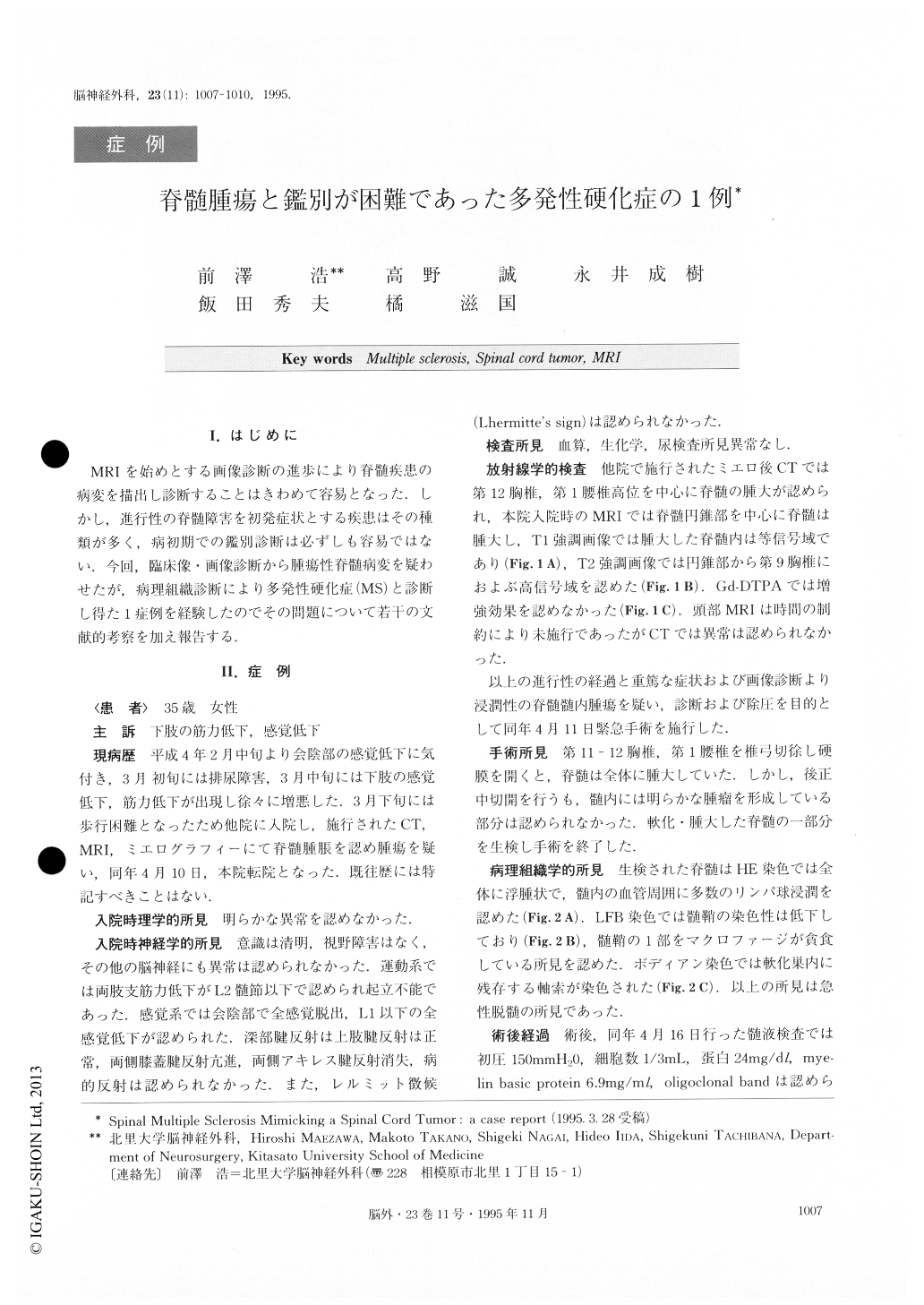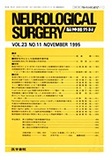Japanese
English
- 有料閲覧
- Abstract 文献概要
- 1ページ目 Look Inside
I.はじめに
MRIを始めとする画像診断の進歩により脊髄疾患の病変を描出し診断することはきわめて容易となった.しかし,進行性の脊髄障害を初発症状とする疾患はその種類が多く,病初期での鑑別診断は必ずしも容易ではない.今回,臨床像・画像診断から腫瘍性脊髄病変を疑わせたが,病理組織診断により多発性硬化症(MS)と診断し得た1症例を経験したのでその問題について若干の文献的考察を加え報告する.
Since the advent of magnetic resonance imaging (MRI), to visualize lesions of multiple sclerosis has be-come easy to do. However, in some cases with primary spinal cord multiple sclerosis, it is not always easy toobtain a diagnosis in the first instance. We reported a case of primary spinal multiple sclerosis diagnosed through histological examination of a surgical specimen taken by an open biopsy. A 35-year-old woman was admitted with complaints of two-months duration of progressive weakness and sensory disturbance in the legs and buttocks. On radiological examinations includ-ing metrizamide CT myelography and MRI, enlarge-ment of the conus medullaris was the only positive finding. Respective to her clinical course, intramedul-lary spinal cord tumor could not be ruled out, so an open biopsy was performed. Histological examination revealed that the cord lesion was acute demyelination with perivascular inflammation. Her neurological signs were almost completely cured with administration of corticosteroid, though new brainstem signs took place two months later and then a concrete diagnosis of her having multiple sclerosis was finally achieved. Since preoperative examinations can not differentiate spinal cord tumor from any other intramedullary cord lesions such as demyelinating foci of multiple sclerosis, surgic-al intervention would be approved in such atypical primary spinal cord multiple sclerosis.

Copyright © 1995, Igaku-Shoin Ltd. All rights reserved.


